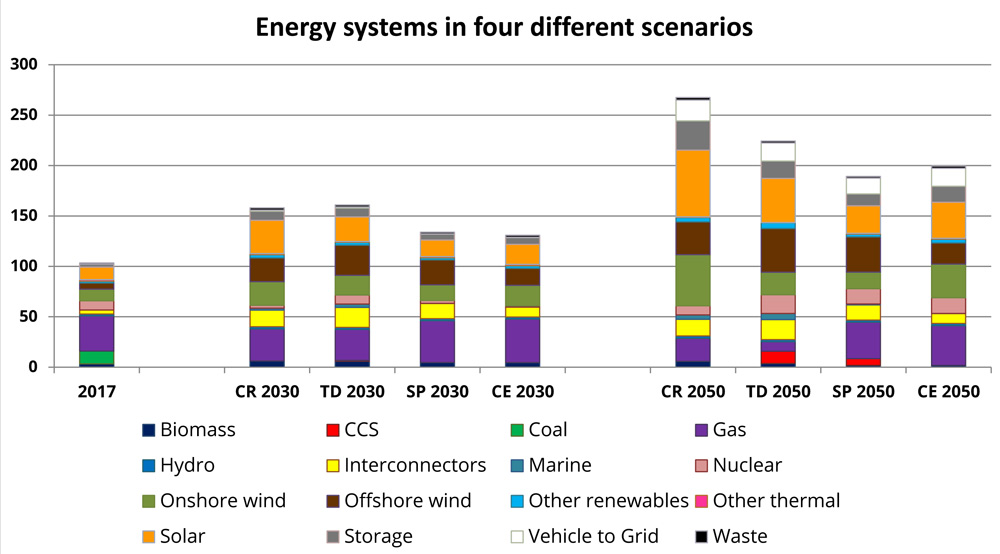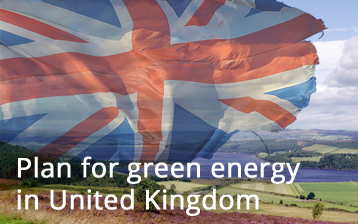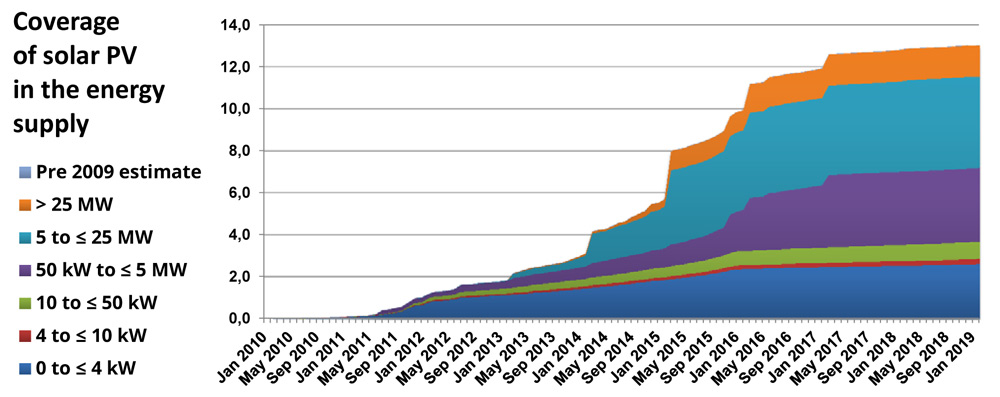The UK’s plan for green energy introduces a series of objectives that could track the road to replace carbon-fueled with renewable energy resources.
In this regard, one of them is solar PV.
13.070 MW of solar PV, a base on which to build
This sector has reached, at the end of last February, 13.070 MW of solar power installed. To date, 44.8% of the total PV capacity come from the big plants (plus then 5 MW), on the other hand, considering the number of solar panels’ installations, 93.2% is related to the sub-4 kW ones.
In addition to this, the following graph shows that 2015 is the most significant year since 2010. In fact, during that period, the UK installed amount to about 4120 MW of power.
The UK, £900 million to grow
The United Kingdom has described a series of trends for all sectors that regards renewable energy sources. This country has based its forecasts in 2050, and the following graph is showing these trends related to different situations in which the UK could find itself. It presents four scenarios:
- CR: energy systems with a more decentralised energy view and with the achievement of the 2050 decarbonisation targets
- TD: energy situation with the aims for 2050 reached thanks to large, centralised technologies.
- SP: energy systems with the failure to achieve the decarbonisation targets because of centralised technologies
- CE: energy systems with an 80% target reached thanks to decentralised technologies

About this, the UK government forecasts to invest about £900 million of public funds until 2021, considering in the count also those invested from 2015. This sum will be used for research and innovation in the energy sector.
177 of these million will be necessary to reduce the renewable energy sources’ cost.
Offshore wind platforms and photovoltaic technologies will be the two technologies that will be most affected by these innovation opportunities.
What incentives are there for renewable resources?
The Feed-in Tariff (FITs) scheme was introduced to England, Scotland and Wales on 1 April 2010, under powers in the Energy Act 2008. The aim was to encourage the low-carbon electric energy distribution (until 5 MW).
According to the scheme, the generators of renewable energy receive three sources of revenue/savings:
- Generational rate: a payment for each kWh generated, based on the technology and the installed capacity and the date of installation
- Export tariff: an additional payment for each kWh exported to the local electricity grid
- Bill saving – an additional advantage deriving from the use of “on-site” electricity compared to paying the retail price for importing this energy from the grid







